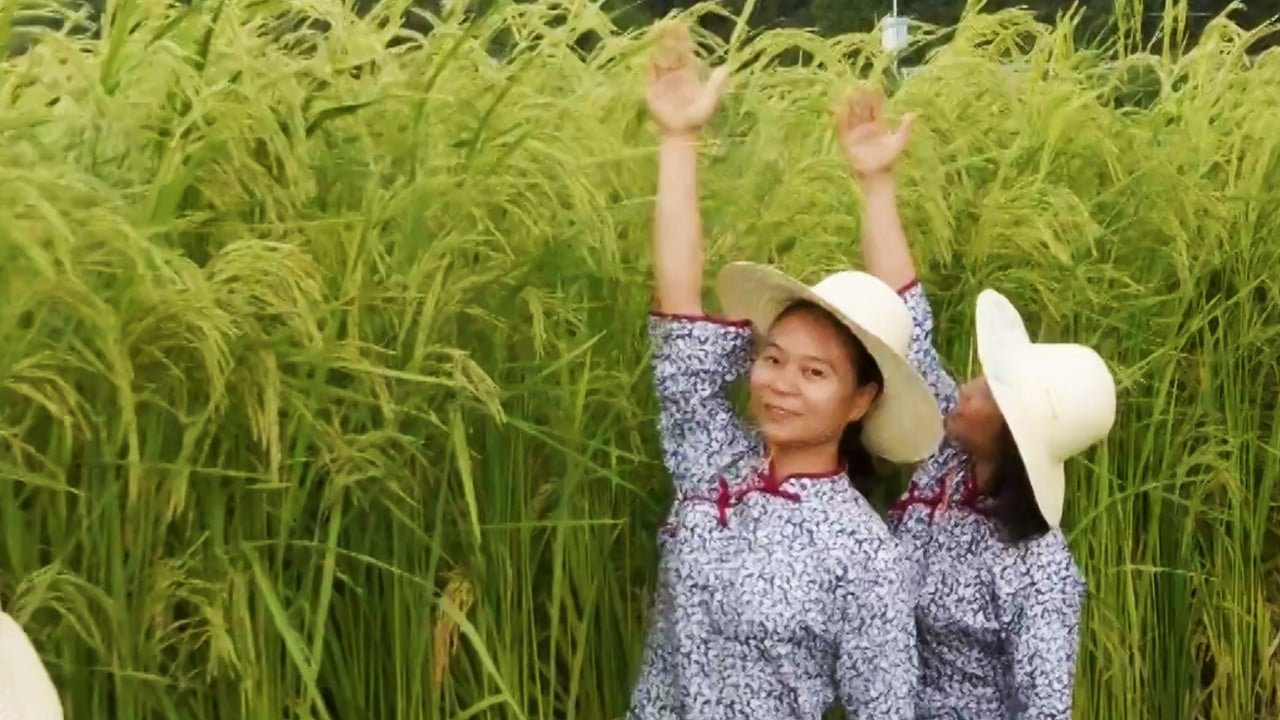On the rim of Xinjiang’s desert, in a region where the soil is so salty that most vegetation refuses to grow, China is touting rising outputs of salt-tolerant rice as further evidence that its food-security drive has taken root.
Beijing expects rising yields of genetically modified crops, especially in remote and rural areas where arable soil is rare, to help serve as a long-term solution to ensuring that the nation’s 1.4 billion people are kept fed.
After an on-site inspection on Friday, an official survey group said that the final yield of salt-tolerant rice in Aksu – in the inland Xinjiang Uygur autonomous region, at the edge of the Taklimakan Desert in western China – was estimated to be 573.8kg (1,265 pounds) per mu, according to Xinhua, using a Chinese unit of area equal to 15 hectares, or 37 acres.
China’s genetically modified giant-rice harvest feeds into food-security drive
China’s genetically modified giant-rice harvest feeds into food-security drive
China’s main rice-producing regions are located in the southern and northeastern provinces, where the geography and seasonal climates are favourable for rice cultivation.
Rice cultivation in the region serves to not only feed locals, it is also the primary grain crop being used in soil-reclamation efforts across saline-alkali lands – also known as salt deserts – where severely salinised soil impedes vegetation growth.
The utilisation of these salt deserts was highlighted during a July 20 meeting of the Central Economic and Financial Affairs Commission chaired by President Xi Jinping.
Salt-tolerant rice, also known as sea rice or saline-alkali tolerant rice, has been a research and development priority in China for years due to the country’s significant issues with soil salinity and alkalinity in various regions.
Rice cultivation also serves to wash away salts and counteract soil alkalinity, and rice is part of a rotation system with other crops such as cotton. This helps prevent desertification, reduces soil salinity, and mitigates pest and disease issues, Xinhua said.
The salt content in the Aksu soil where the rice is being grown had exceeded 0.3 per cent, with a pH level above 8.5, classifying it as heavily saline-alkali soil, Xinhua added.
How extreme rainfall is taking a growing toll on China’s rice crops
How extreme rainfall is taking a growing toll on China’s rice crops
China is the world’s largest rice-producing country, with an output of 208 million tonnes (416 billion pounds) last year, or about a quarter of global production.
Its rice imports sank by 55.8 per cent in the first eight months of this year, to 2.02 million tonnes, amid global price increases.
In August 2023, the State Council said China needs to develop various non-traditional arable land resources, and “overcome the natural constraints of traditional arable land scarcity”.
“The country should coordinate the use of reserve arable land, forests, grasslands, rivers, lakes and seas to diversify food sources,” the cabinet said.


